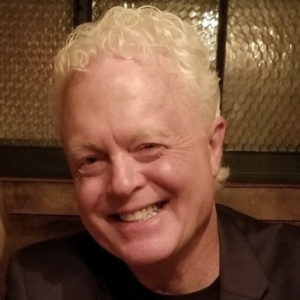One-on-one with…Randy Brown
When senior living organizations need updating, they often turn to renovations or new service lines to freshen their brand. But what happens when what needs to be updated is the brand itself? Rowntree Gardens, Stanton, Calif., formerly named Quaker Gardens, discovered that a big part of solving its “mid-life crisis” was to rebuild its community marketing approaches under a new name that reflected its current vitality and its future without abandoning its roots.
Founded in 1965, part of the organization's "50-something" facelift included new IT infrastructure, building renovations and updated programming. But like many faith-based organizations, the campus also suffered from the misconstrued views its potential client base had of its previous name. CEO Randy Brown shares with Long-Term Living Editor-in-Chief Pamela Tabar what it was like to tackle a complete rebranding process after a successful half-century in the Orange County senior living market.
How did the name change become a major focus of your rebranding?
We did some focus groups and some secret shopping, and we heard a lot of, “When I hear the name ‘Quaker,’ I envision black clothing and a beard.” Other people thought we were Amish, or else they’d think about the oatmeal thing. I’m a long-time believer that your brand tells more about who you are than what you do. When people actually came to visit us, they saw who we are, and that’s when we really make the connection. But the name was a big part of what was holding people back. If we were going to get more people to come visit, we’d have to take away that barrier.
How did you choose the new brand name without ditching your roots?
The Rowntree name is actually a Quaker name from the United Kingdom. Our campus has a very beautifully landscaped garden setting, so the “gardens” part tied into the way we look. So [the new name] kept some Quaker roots for those who would find it meaningful.
How did you decide what issues to tackle first?
We’d deferred making any major physical changes for so long that we really needed to do them, and then we also understood that the [name] hurdle was in the way of attracting people to our campus. So we needed to do both efforts at the same time, because the more you dive into that, the more you realize that they are so interconnected that it’s almost a necessity to do it all at once.
How did you involve your staff in your other changes?
We’d had a habit where we’d put bandages on things instead of fixing them, so we wanted to start with a new approach. We brought in staff from all over the facility because we wanted all that input. We had several brainstorming sessions to extract out the important elements of what we wanted the brand to be. [Staffers] know what’s going to work and what will be accepted by residents. So as we looked at our infrastructure and technology, we wanted their input as to what was going to make the most productive sense. I wanted to bring our people along so the communication would be bi-directional. We’ve done a lot in the last 12 months, and we still have more to do in the next six months.
What lessons has the rebranding process taught you?
We’d always felt that our quality of service, our local reputation and the feel that people get when they visit our campus are when we really make the connection. But we had to reach out and find a way to tell that story, explain the brand and get more people engaged and willing to visit. We had been relying heavily on internal referrals and were doing well, and a lot of that came from our reputation. We were doing a good job internally, but we had to reach out to the community at large and do a much better job of communication. As we looked around, we said, “What would make our growth plans work? What would make us relevant for the next 50 years?” The name change was a big part of that, but I think who we are really hasn’t changed—we just got a lot better at telling people our story, I think.

Pamela Tabar was editor-in-chief of I Advance Senior Care from 2013-2018. She has worked as a writer and editor for healthcare business media since 1998, including as News Editor of Healthcare Informatics. She has a master’s degree in journalism from Kent State University and a master’s degree in English from the University of York, England.
Related Articles
Topics: Articles , Executive Leadership











